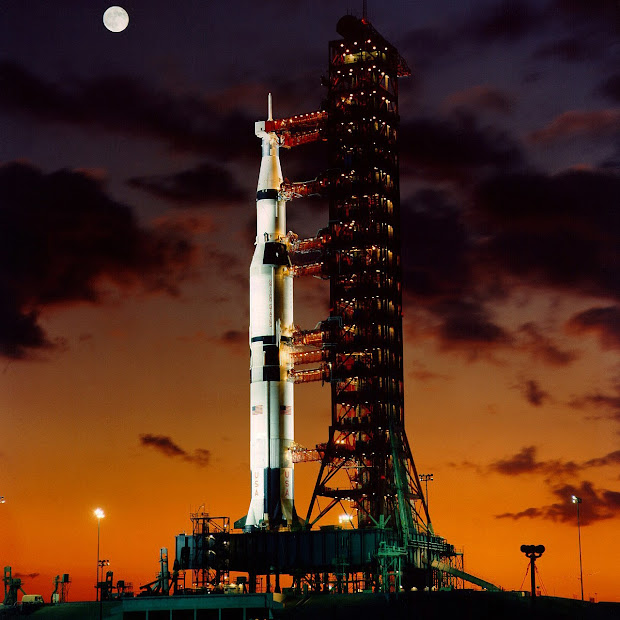Click on the image to enlarge
Early morning photo on November 9, 1967 of launch pad 39A, Kennedy Space Center, showing Saturn V (SA-501) for the Apollo 4 mission (Spacecraft 017) prior to launch later that day. This was the first test launch of the Saturn V rocket. On May 25, 1961, U.S. president John Kennedy announced the goal of landing Americans on the Moon by the end of the decade. Kennedy's ambitious speech triggered a nearly unprecedented peacetime technological mobilization and one result was the Saturn V moon rocket. Its development directed by rocket pioneer Wernher Von Braun, the three stage Saturn V stood over 36 stories tall. It had a cluster of five first stage engines fueled by liquid oxygen and kerosene which together were capable of producing 7.5 million pounds of thrust. Giant Saturn V rockets ultimately hurled nine Apollo missions to the Moon and back again with six landing on the lunar surface. The first landing, by Apollo 11, occurred on July 20, 1969 achieving Kennedy's goal. Boeing, McDonnell Douglas and North American Aviation collaborated to develop and produce the mammoth 363-foot Saturn V rocket. All 15 S-1Cs were built between 1965 and 1975. Twelve were used on the Apollo missions, and the 13th, in 1973, placed Skylab in Earth orbit. The remaining rockets were placed on display.
Credit: Boeing
Image restoration: Jean-Baptiste Faure











0 comment(s):
Post a Comment